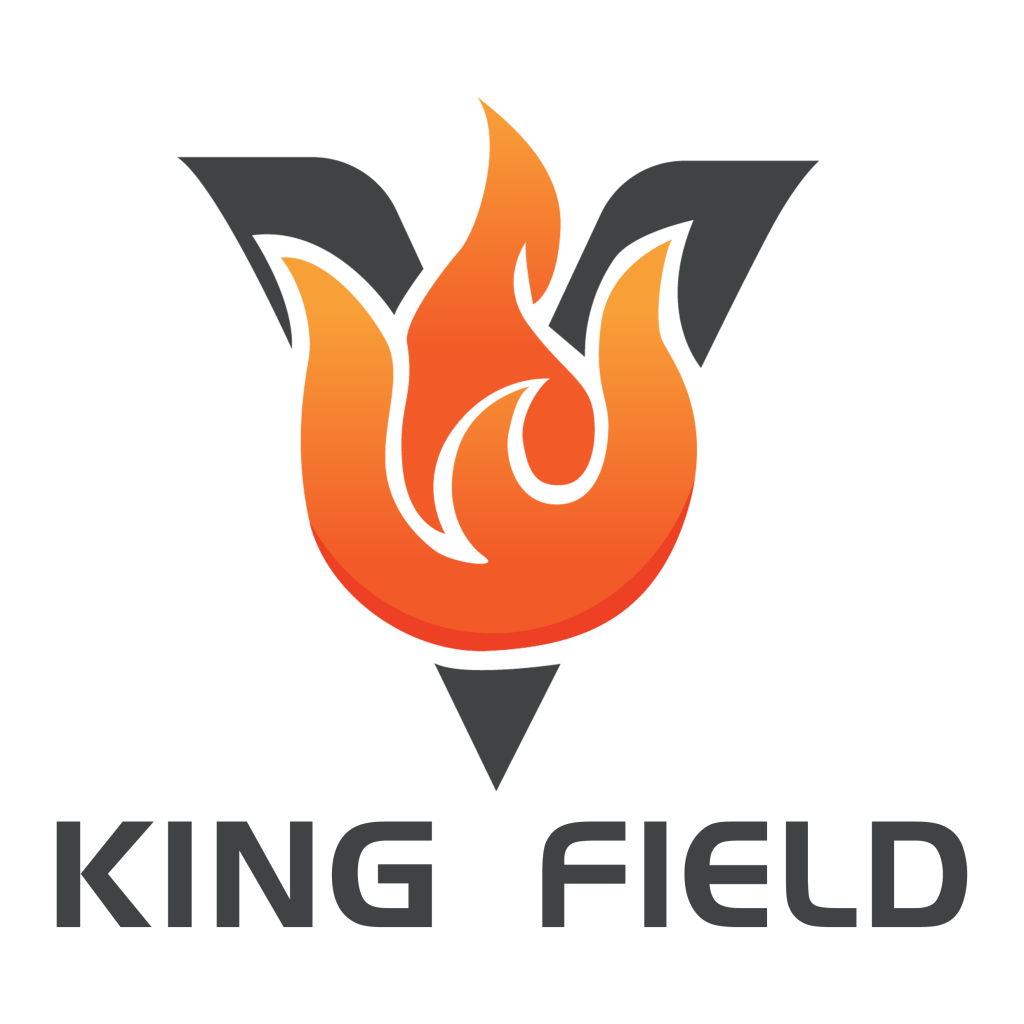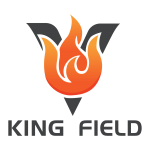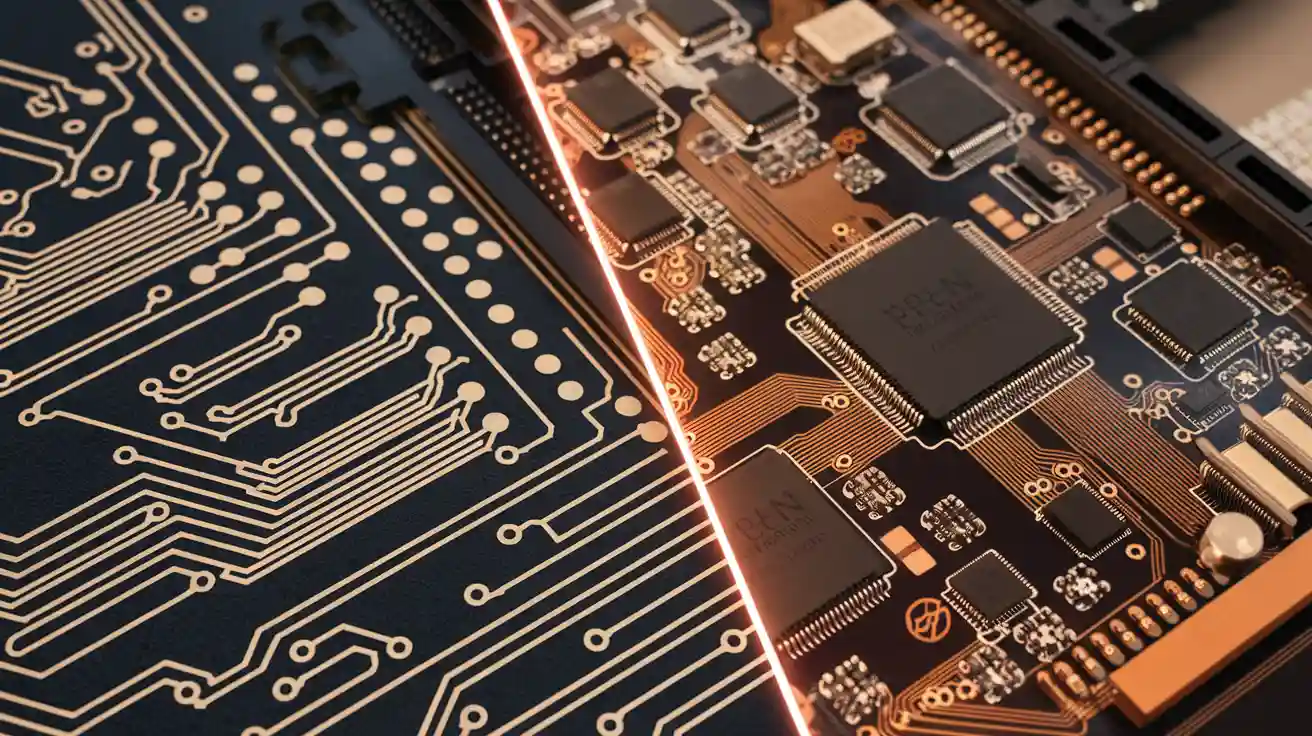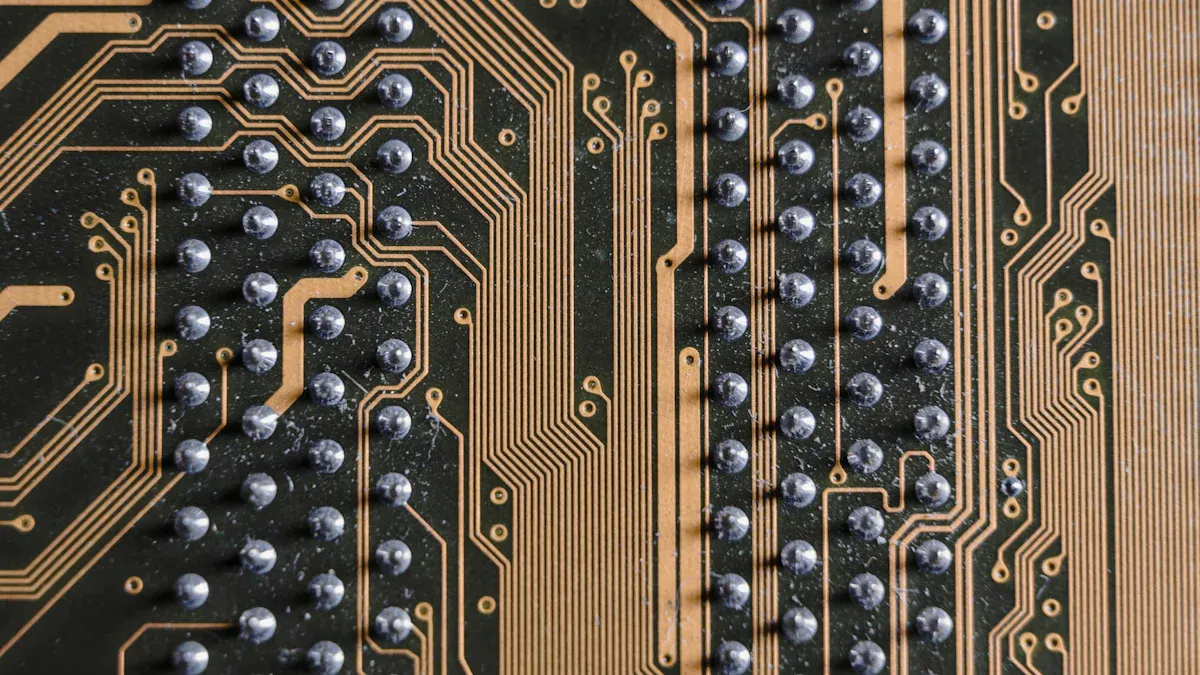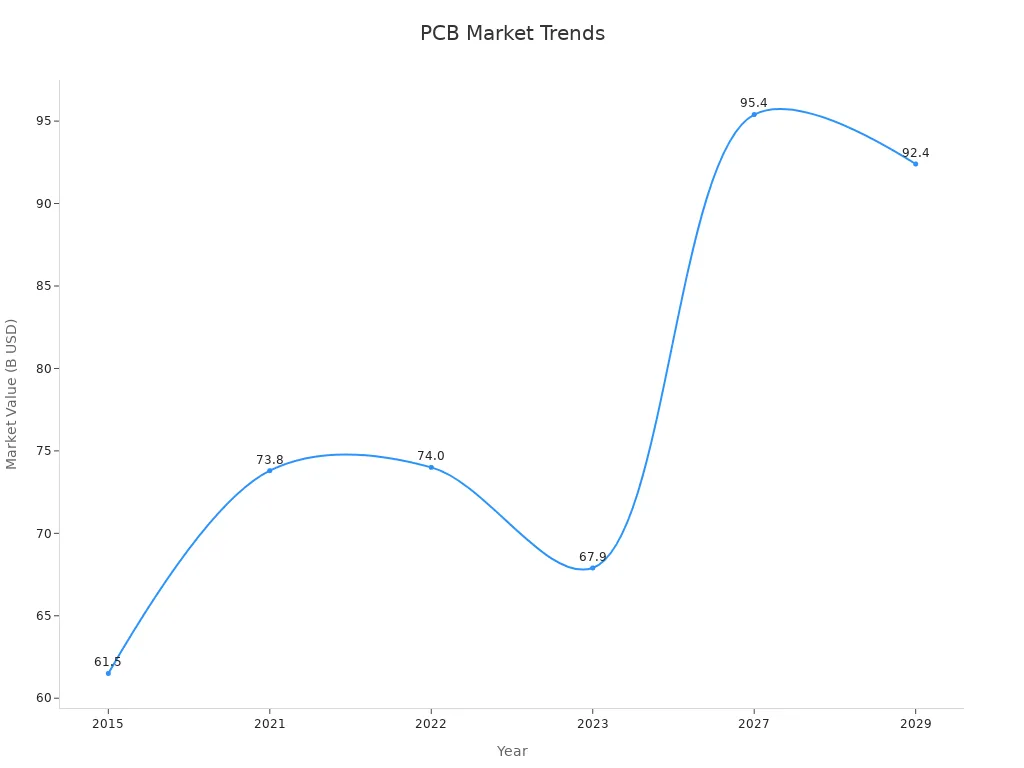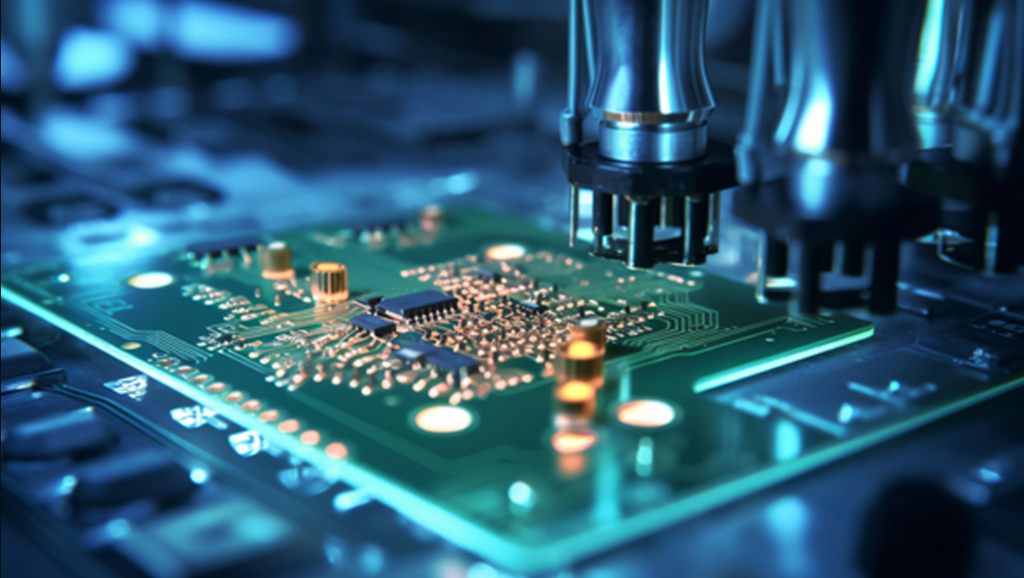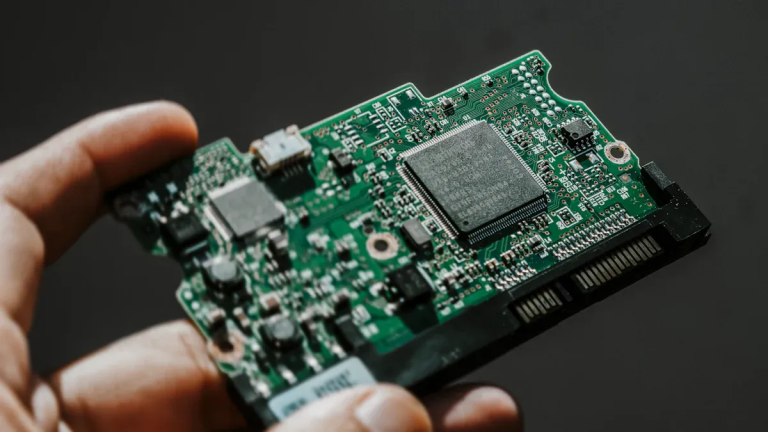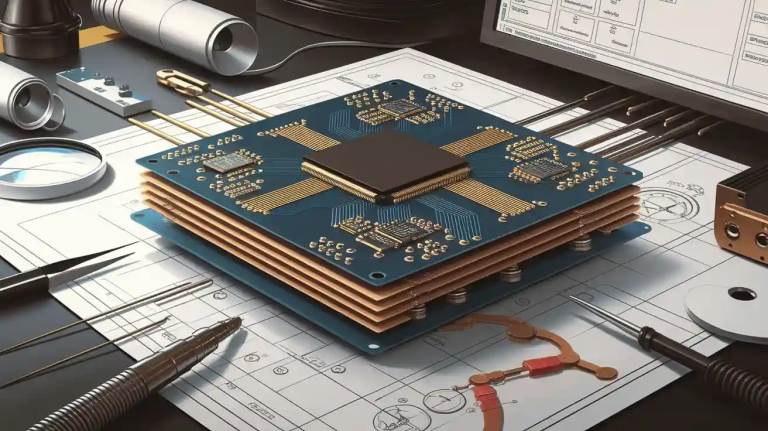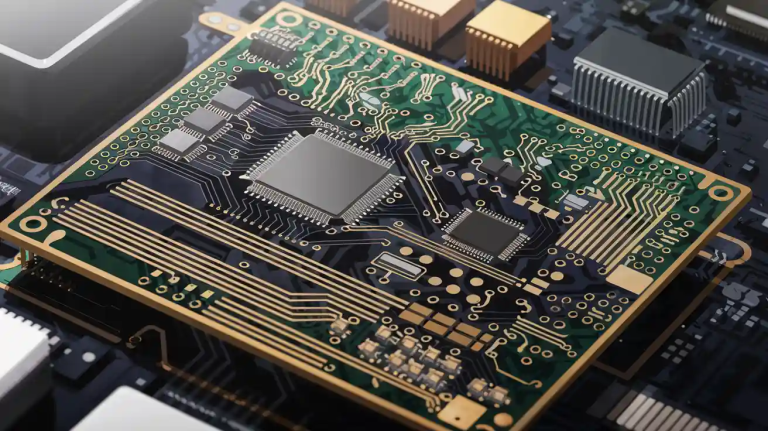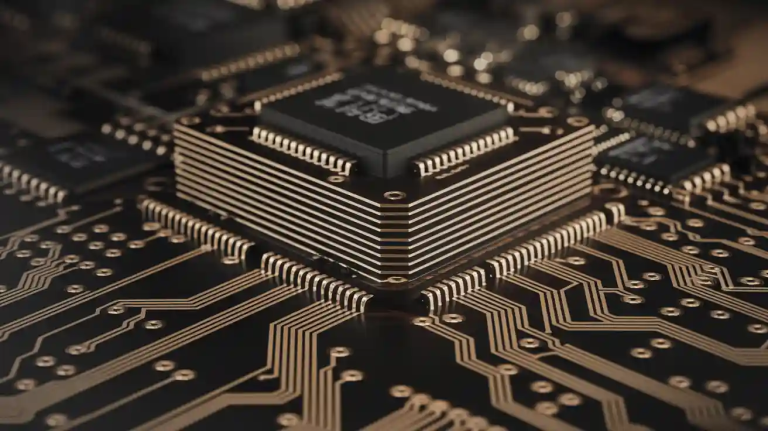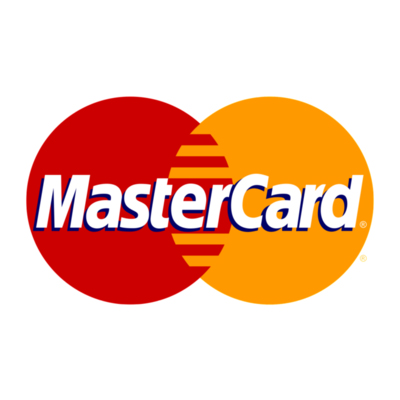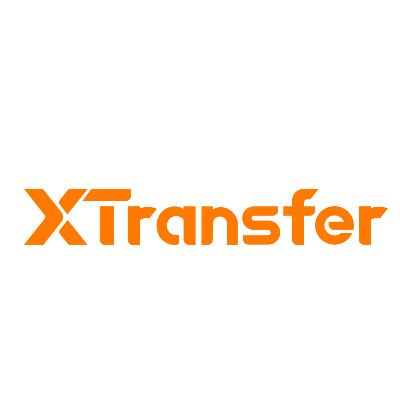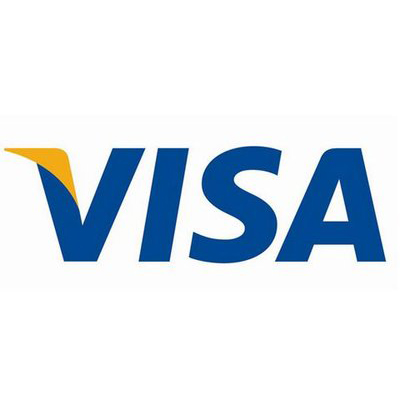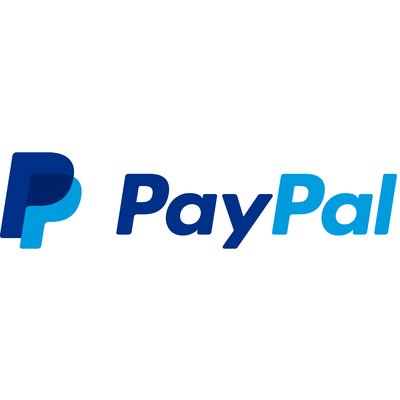Printed Circuit Boards (PCBs) serve as the foundation of modern electronics. These flat boards, made from non-conductive materials, contain conductive pathways that link various electronic components. Meanwhile, Printed Circuit Board Assembly (PCBA) refers to a PCB that has been equipped with components such as resistors, capacitors, and chips, enabling it to function effectively.
Understanding the difference between PCB and PCBA is crucial in the field of electronics manufacturing. The global market for these technologies underscores their significance. In 2024, the PCB and PCBA market was valued at USD 67.65 billion, with projections to grow to USD 85.88 billion by 2031—a compound annual growth rate of 3.34%. This steady growth highlights the vital role of a PCBA factory in meeting the increasing demand and emphasizes the importance of understanding the distinctions between PCB and PCBA.
Key Takeaways
- A PCB is just a plain circuit board. A PCBA has all the parts added, so it works. Knowing this difference helps in making electronics better.
- Testing in PCBA making uses strict methods like electrical checks and machine inspections. These tests make sure it works well and has fewer problems.
- Saving money and time is important in a PCBA factory. Making more good products faster lowers costs and makes customers happy.
What is a PCB?
Definition of Printed Circuit Boards
A printed circuit board (PCB) is a foundational component in modern electronics. It provides a platform for connecting and supporting electronic components through conductive pathways etched onto a non-conductive substrate. These pathways, often made of copper, enable the flow of electricity between components, ensuring the device operates as intended.
“Printed circuits were developed during World War II by the National Institute of Standards and Technology for use in the proximity fuze for artillery shells. Subsequently, the printed circuit found wide use in communication equipment, such as television and radio receivers, radar, and hearing aids, computers, and in instrumentation for guided missiles and airplanes.”
Today, PCBs are integral to nearly every electronic device, from smartphones to industrial machinery. As technology advances, the density and complexity of circuit boards continue to grow, accommodating more components in smaller spaces.
Materials and Types of PCBs
PCBs are constructed using a variety of materials, each chosen for specific applications. The most common material is FR-4, a fiberglass-reinforced epoxy laminate known for its durability and heat resistance. Other materials include polyimide for flexible PCBs and phenolic resin for cost-effective options.
| Material Type | Examples |
|---|---|
| Laminate Materials | FR-4, FR-4 high Tg, FR-4 halogen-free, Flexible (PI, PET), Paper, Composites, Others |
| Raw Materials | Glass fabric, Epoxy resin, Kraft paper, Phenolic resin, Polyimide film |
PCBs can also be categorized based on their structure and application:
- Rigid PCBs: Common in consumer electronics and automotive systems due to their strength and reliability.
- Flexible PCBs: Used in devices requiring bending or folding, such as wearables.
- Rigid-Flex PCBs: Combine the benefits of both rigid and flexible boards.
Functionality of a PCB
The primary role of a PCB is to provide a reliable platform for electronic components. It ensures proper electrical connections while maintaining the physical integrity of the device.
| Application Area | Functional Role |
|---|---|
| Telecommunications | Essential for signal processing and network management, ensuring minimal signal interference. |
| GPS Devices | Integrate RF components and signal processors for accurate location tracking. |
| General Electronics | Provide interconnections for components, ensuring reliability and performance in devices. |
| EMI Management | Design considerations to combat electromagnetic interference, ensuring device functionality. |
By optimizing component placement and thermal management, PCBs enhance device performance and longevity. As a result, they play a critical role in the success of electronics manufacturing.
What is a PCBA?
Definition of PCBA
A Printed Circuit Board Assembly (PCBA) refers to a circuit board that has undergone the assembly process, where electronic components are mounted onto a bare PCB. This process transforms the board into a functional unit capable of performing specific tasks.
| Term | Definition |
|---|---|
| PCBA | Refers to the process of assembling electronic components onto a Printed Circuit Board to create a functional circuit. |
| PCB Assembly | The process of adding electronic components to the bare PCB to form a complete assembly. |
To ensure quality and reliability, PCBA manufacturing adheres to established standards:
- IPC Standards: Provide guidelines for design, manufacturing, and assembly.
- ISO Certifications: ISO 9001 ensures quality management, while ISO 14001 focuses on environmental sustainability.
- RoHS Compliance: Guarantees that PCBAs are free from hazardous substances.
- UL Certification: Validates safety and reliability.
Components and Assembly Methods
PCB assembly involves several steps to create printed circuit board assemblies:
- Soldering Components:
- Surface Mount Technology (SMT): Components are placed on the PCB using solder paste and reflow soldering.
- Through-hole Technology: Components are inserted into drilled holes and soldered using wave soldering.
- Firmware Installation: Firmware is applied to the PCB to meet functional requirements.
- Quality Control (QC): Visual inspections identify errors early in production.
- Automated Optical Inspection (AOI): Cameras scan the PCBA for defects.
- X-Ray Inspection: Hidden solder joints in complex boards are examined.
- Optional Steps: Cleaning and conformal coating enhance reliability.
- Electrical Testing: Ensures the PCBA meets performance standards.
These methods ensure that each circuit board assembly meets industry requirements and functions as intended.
Applications of PCBA in Electronics
Printed circuit board assemblies are essential in modern electronics. They power devices across industries, including:
- Smart Home Devices: Enable automation through sensors and communication modules.
- Wearable Technology: Drive fitness trackers and smartwatches.
- Industrial IoT Devices: Facilitate operations in smart factories.
- Electric Vehicles (EVs): Manage battery systems and power conversion.
| Industry/Application | Description |
|---|---|
| Firearm Applications | Used in testing equipment for safety and functionality of firearms and ammunition. |
| Marine Applications | Controls navigation, engine management, and power distribution systems on vessels. |
| Security Applications | Coordinates components in security systems like alarms and electronic locks. |
| Broadcasting and Telecommunications | Used in LED displays, amplifiers, and various broadcasting equipment. |
PCBAs demonstrate versatility, supporting advancements in IoT, EVs, and other cutting-edge technologies.
PCB vs PCBA: Key Differences
Composition and Structure
The primary difference between a PCB and a PCBA lies in their composition and structure. A PCB is a bare circuit board made from non-conductive materials like fiberglass, with copper traces etched onto its surface. It serves as the foundation for electronic devices but cannot function independently. In contrast, a PCBA includes all the necessary components, such as resistors, capacitors, and microchips, soldered onto the PCB. This assembly transforms the board into a fully functional unit capable of performing specific tasks.
| Aspect | PCB (Printed Circuit Board) | PCBA (Printed Circuit Board Assembly) |
|---|---|---|
| Definition | A bare board made from non-conductive material. | A PCB with electronic components soldered onto it. |
| Composition | Composed of fiberglass with copper traces. | Includes resistors, capacitors, chips, and transistors. |
| Functionality | Does not function independently. | Fully functional unit that performs electronic tasks. |
| Analogy | Like the frame of a house. | Like a fully furnished home with electrical systems. |
Manufacturing Processes
PCB manufacturing focuses on creating the bare circuit board. This process involves substrate selection, image transfer, etching, drilling, plating, and applying a solder mask. The result is a blank board ready for assembly. On the other hand, PCBA manufacturing begins with the bare PCB and involves several additional steps. These include applying solder paste, placing components using Surface Mount Technology (SMT) or Through-Hole Technology, and soldering. The final stages involve quality inspections, such as Automated Optical Inspection (AOI) and functional testing, to ensure the assembly meets performance standards.
| Aspect | PCB Manufacturing | PCB Assembly |
|---|---|---|
| Primary Goal | Creation of the bare PCB | Population of the PCB with components |
| Input | PCB design files (e.g., Gerber files) | Bare PCB, Bill of Materials (BOM), component placement data |
| Key Processes | Substrate selection, Image transfer, Etching, Drilling, Plating, Solder mask application | Component sourcing, Solder paste application, Component placement (SMT & Through-hole), Reflow soldering, Wave soldering, AOI, Functional testing |
| Output | Bare printed circuit board | Fully populated PCB assembly |
| Interdependence | Independent Process with dependent on PCB design | Dependent on PCB manufacturing |
The two processes are sequentially dependent. A PCB must be manufactured before it can undergo assembly.
Functionality and Practical Usage
A PCB alone cannot perform any electronic function. It acts as a platform for connecting components and routing electrical signals. In contrast, a PCBA is a complete unit capable of executing tasks in various applications, from consumer electronics to industrial machinery. For example, a PCB might resemble a blueprint, while a PCBA represents the finished product ready for deployment.
| Metric Type | PCB Performance | PCBA Performance |
|---|---|---|
| Precision Score | >82% | N/A |
| Defect Prediction | Early identification of ICT defects | N/A |
| Cost Efficiency | Lower costs for cleaning PCB | Higher costs for diagnosing BGA defects |
| Environmental Impact | Reduced scrap | N/A |
Understanding these differences helps you make informed decisions in electronics manufacturing, ensuring efficiency and quality in your projects.
Common Misconceptions About PCB and PCBA
Misunderstanding the Terms
Many people confuse PCB and PCBA, assuming they are interchangeable. This misunderstanding often stems from the similarity in their names. A PCB refers to the bare circuit board, while a PCBA includes the components mounted onto the PCB, making it functional.
You might encounter situations where someone refers to a PCB as a complete assembly. This mislabeling can lead to confusion during discussions about manufacturing processes or product specifications. For example, when ordering parts, specifying a PCB instead of a PCBA could result in receiving an incomplete product.
Tip: Always clarify whether you need a bare PCB or a fully assembled PCBA when communicating with suppliers or manufacturers. This ensures you receive the correct product for your project.
Analogies to Explain PCB and PCBA
Analogies can simplify the distinction between PCB and PCBA. Think of a PCB as the blueprint of a house. It provides the structure but lacks the furnishings and utilities needed to make it livable. On the other hand, a PCBA resembles a fully furnished home, complete with electrical systems, furniture, and appliances.
Another analogy compares a PCB to a skeleton. It forms the framework but cannot function independently. A PCBA, in contrast, is like a body with organs and systems working together to perform tasks. These comparisons help you visualize the relationship between the two and understand their roles in electronics manufacturing.
Practical Insights from a PCBA Factory
Cost and Production Time
In a pcba factory, cost efficiency and production timelines are critical factors that determine success. High yield rates, reduced defect rates, and streamlined processes contribute to cost savings and faster delivery. For instance, a factory achieving a 96% yield rate minimizes waste, directly lowering production costs. Additionally, reducing the manufacturing cycle time by 20% ensures timely delivery, enhancing customer satisfaction.
| Metric | Value | Impact on Cost Efficiency and Timelines |
|---|---|---|
| Yield Rate | 96% | High yield reduces waste and costs, improving profitability. |
| Manufacturing Cycle Time | Reduction of 20% | Faster production leads to timely delivery. |
| Overall Efficiency Improvement | Up to 15% | Enhances productivity and reduces operational costs. |
| Cost Reduction | 15%-20% | Lower costs improve margins and competitiveness. |
| Defect Rate | Improved to 95% | Higher quality leads to fewer returns and increased satisfaction. |
| Throughput Improvement | Over 30% | Increases production speed and efficiency. |
| On-time Delivery Success Rate | At least 98% | Ensures customer satisfaction and market reputation. |
To achieve these results, factories rely on systematic data collection and analysis. By monitoring production shifts and machines, you can identify inefficiencies and implement corrective actions. This approach not only reduces costs but also improves overall throughput by over 30%.
Testing and Quality Assurance
Quality assurance in a pcba factory involves rigorous testing protocols to ensure reliability and performance. These include electrical testing, environmental stress tests, and functional testing under real-world conditions. For example, 100% electrical testing verifies continuity and isolation, while functional testing ensures the assembly meets operational standards.
| Testing Method | Description |
|---|---|
| ICT | Verifies solder joints and component functionality, identifying defects like shorts and incorrect placements. |
| FCT | Simulates actual operating conditions to ensure all components function together correctly. |
| AOI | Uses high-resolution cameras for visual inspection to detect surface defects like solder paste issues. |
| X-Ray | Non-destructive method to inspect hidden solder joints, ensuring quality in areas not visible externally. |
Visual inspections and automated optical inspections (AOI) play a vital role in identifying defects early. X-ray examinations further ensure the quality of hidden solder joints, especially in complex assemblies. These measures reduce defect rates, improve customer satisfaction, and enhance the reputation of your pcba factory.
Tip: Partnering with a pcba factory that prioritizes quality assurance can save you time and money in the long run.
PCBA Factory Scenario Diagram
Below is a simplified diagram illustrating the workflow in a pcba factory:
[PCB Manufacturing] --> [Component Sourcing] --> [SMT Assembly] --> [Through-hole Assembly] --> [Quality Testing] --> [Final Product]
This streamlined process ensures efficiency and high-quality output, meeting the demands of modern electronics manufacturing.
Understanding the differences between PCB and PCBA is essential for making informed decisions in electronics manufacturing. A PCB serves as the bare board, while a PCBA includes mounted components, transforming it into a functional unit.
| Aspect | PCB | PCBA |
|---|---|---|
| Composition | Bare board | Board with components |
| Functionality | No electronic functions | Fully functional |
| Complexity | Simpler | More complex |
Recognizing these distinctions helps you optimize production processes, reduce errors, and ensure high-quality outcomes. This knowledge empowers you to navigate the complexities of modern electronics manufacturing effectively.
FAQ
What is the main difference between PCB and PCBA?
A PCB is a bare board with no components. A PCBA includes all necessary components, making it a functional electronic assembly.
Can you reuse a PCB after assembly?
You can reuse a PCB if it remains undamaged during disassembly. However, removing components may compromise the board’s integrity.
Why is quality testing crucial in PCBA manufacturing?
Testing ensures the PCBA meets performance standards. It identifies defects early, reducing costs and improving reliability in electronic devices.
